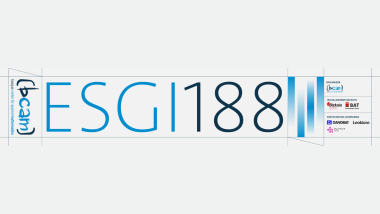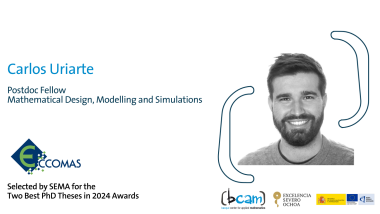Julia M. Kroos will defend her doctoral thesis on Monday, June 17th
- The defense will take place in the Faculty of Science and Technology, located in the Campus of Leioa, at 11:00 am
Julia M. Kroos joined the Basque Center for Applied Mathematics in 2014 as a PhD student. She holds a Bachelor Degree in Applied Mathematics, obtained in 2011 from University of Münster (Germany), and a Master of Science in Applied Mathematics from the same university, obtained in 2014.
Her PhD thesis has been directed by Dr. Luca Gerardo-Giorda, research line leader of the Mathematical Modeling in Biosciences group at BCAM.
On behalf of all BCAM members, we would like to wish Julia the best of luck in her upcoming thesis defense.
PhD Thesis title: Patient-specific modelling of cortical spreading depression applied to migraine studies
Migraine is a common neurological disorder and one-third of migraine patients suffer from migraine aura, a perceptual disturbance preceding the typically unilateral headache. Cortical spreading depression (CSD), a depolarisation wave that originates in the visual cortex and propagates across the cortex to the peripheral areas, has been suggested as a correlate of visual aura by several studies. The complex and highly individual-specific characteristics of the brain cortex suggest that the geometry might have a significant impact on CSD propagation. In this thesis, we combine two existing models, a detailed neurological model for the electrophysiological component of CSD and a reaction-diffusion model accounting for the potassium diffusion, the driving force of CSD propagation. In the process, we integrate two aspects of CSD that occur at different time scales: the electrophysiological dynamics features a temporal scale in the order of milliseconds, while the extracellular potassium dynamics that triggers CSD propagation features is on the scale of minutes. As a result we obtain a multi-scale PDE-ODE model. In addition, we incorporate patient-specific data in the CSD model: (i) a patient-specific brain geometry obtained from magnetic resonance imaging, and (ii) personalised conductivity tensors derived from diffusion tensor imaging data. To study the role of the geometry in CSD propagation, we define geometric and CSD-dependent quantities of interest (QoI) that we evaluate in two case studies. Even though the geometry does not seem to have a major impact on the CSD propagation, some QoI are promising candidates to aid in the classification of healthy individuals and migraine patients. Finally, to account for the lack of experimental data for validation and selection of the model parameters, we apply different techniques of uncertainty quantification to the CSD model and analyse the impact of various parameter choices on the model outcome.
Related news
Zentroari buruz
ESGI 188 (European Study Group with Industry) Bilbon izango da 2025eko maiatzaren 26tik 30era
BCAM pertsonak




